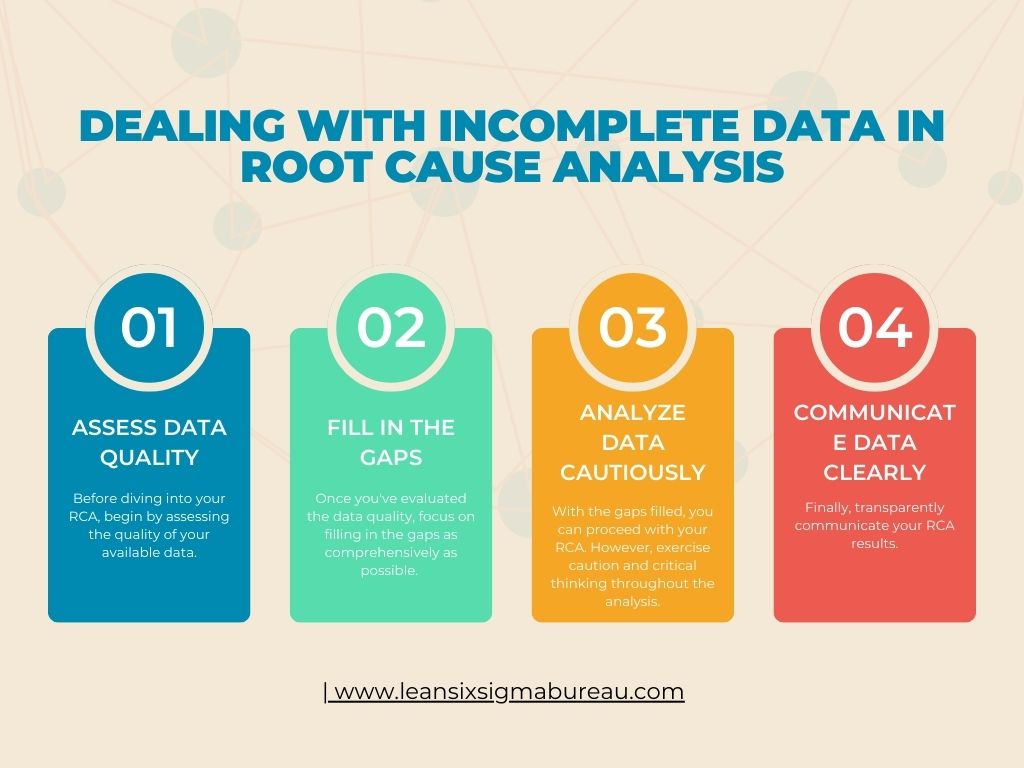Root cause analysis (RCA) is an essential tool in Lean Six Sigma, helping identify and eliminate the underlying factors behind defects, errors, or process failures. However, incomplete data can challenge the accuracy and validity of your RCA. So, how do you navigate this situation and still conduct a reliable and effective analysis? Here are some practical tips and strategies to guide you.Assess Data QualityBefore diving into your RCA, begin by assessing the quality of your available data. This involves checking for missing values, outliers, errors, inconsistencies, or any biases present. You can employ various methods and tools for this, including descriptive statistics, histograms, box plots, or Pareto charts. Additionally, evaluate the data’s source, reliability, and relevance by asking questions such as: Where did the data originate? How was it collected and stored? How frequently was it updated? And most importantly, how does it relate to the problem you’re aiming to solve?Fill in the GapsOnce you’ve evaluated the data quality, focus on filling in the gaps as comprehensively as possible. The approach you choose will depend on the type and extent of missing data. You can utilize imputation techniques like mean, median, or mode substitution to replace missing values with reasonable estimates. Alternatively, employ interpolation or extrapolation methods, such as linear or spline regression, to estimate values based on existing data points. For further validation, consider using expert judgment, surveys, interviews, or observations to collect additional data or confirm the existing dataset.Analyze Data CautiouslyWith the gaps filled, you can proceed with your RCA. However, exercise caution and critical thinking throughout the analysis. Acknowledge the data’s limitations and uncertainties and refrain from making assumptions or hasty conclusions. Choose suitable methods and tools for data analysis, such as fishbone diagrams, 5 whys, cause-and-effect matrices, or failure mode and effects analysis (FMEA). Verify and validate your findings by cross-referencing multiple sources of data, testing hypotheses, or conducting experiments.Communicate Data ClearlyFinally, transparently communicate your RCA results. Document and report your data sources, methods, tools, findings, and recommendations. Highlight the strengths and weaknesses of your data and analysis, and specify your confidence level and accuracy. Employ visual aids like charts, graphs, or tables to present data in a simple and understandable manner. Tailor your communication to your audience and purpose, and actively seek feedback and suggestions for improvement.Dealing with incomplete data in root cause analysis can be challenging, but with a systematic and thorough approach, you can still uncover valuable insights and drive effective problem-solving. By following these steps and maintaining a critical mindset, you can enhance the reliability of your RCA, leading to more robust solutions and continuous improvement in your Lean Six Sigma journey.
Dealing with Incomplete Data in Root Cause Analysis


